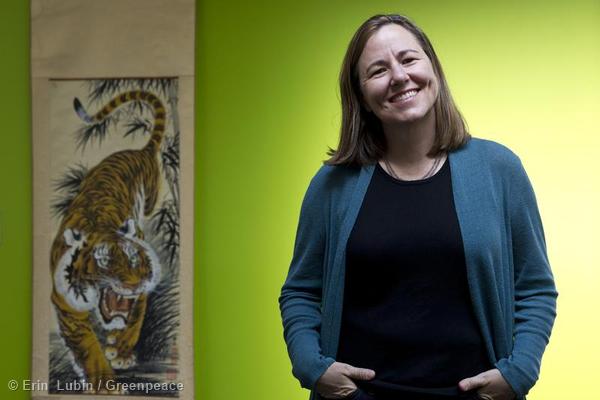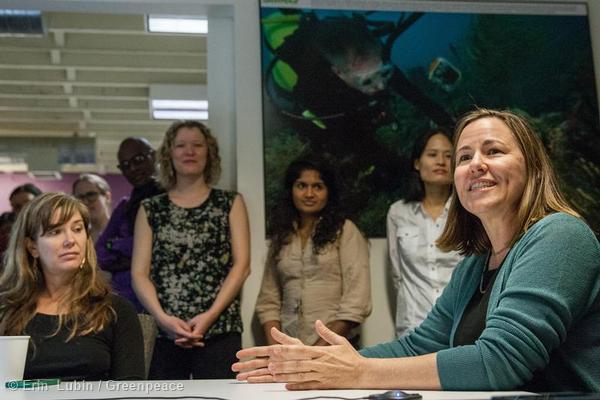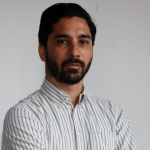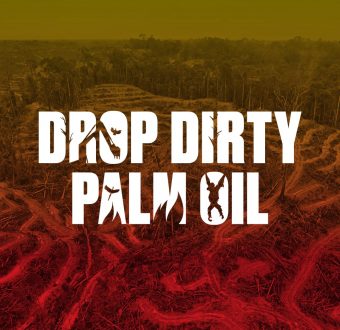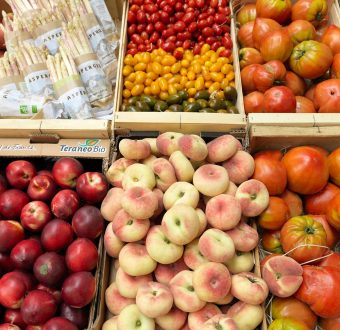If you know the name Annie Leonard, its probably because you are one of the tens of millions of people who have watched her short film, The Story of Stuff. Now wed like you to know her for another reason: she’s Greenpeace USA’s new executive director.
This is actually a reunion for Greenpeace USA and Annie. She was a toxics campaigner for Greenpeace International starting in 1988. After leaving, she went on to campaign all over the world for the environmental and justice movements. It all culminated with the The Story of Stuff Project and its eight great movies.
For a more official announcement, including why we think this is such an awesome fit, see this Tuesdayspost by Greenpeace USA board member Karen Topakian. In this two-part interview, were going to let Annie do the talking.
JS: The national climate assessment came out this week. It states what many already take as a given: that the effects of climate change are occurring now, that they are human-caused, and that the solutions lie with people. The jury’s out on how our leaders will lead on the particulars. As a cultural and environmental leader yourself, what does leadership on climate look like?
AL: It looks a lot of different ways. This is an all hands on deck situation. We need to be doing what we can in our own communities to reduce our carbon use, but were going to get much more done if we can focus more on engaging as citizens and forcing our political and business leaders to take action.
I worry that the paralysis of government makes us focus our attention on small, individual things like composting and recycling and changing our light bulb and riding our bikes. I often say those are a good place to start but a terrible place to stop. Of course we need to do things in our own lives to lessen our impacts.
But the real difference is going to come in getting together as citizens and demanding real change from our leaders.
JS: It seems like to do that, we need to be focused as a movement on building of community. Thats something that Greenpeace has been doing for a long time, and its something we have reinforced through a number of our initiatives. But we all know the way to do it is changing. What is the role of on-the-ground community building in the digital age, and how is it changing?
AL: Community building is really key to this. Stronger communities are going to be able to withstand environmental changes better. Also, the more we have strong communities, the more we can reduce our carbon output and meet our needs through community and sharing rather than more and more consumption.
Greenpeace provides information and inspiration. People cant be engaged citizens without either of them.
But we also have so much room to broaden what it means to be part of our community for supporters. Our supporters provide much needed, crucial financial support, which allows us to not be beholden to any government or corporation. But there are a lot of other ways GP supporters can support our campaigns, from writing letters to attending community meetings to taking direct action and marching in the streets. Id love to see us call upon our supporters more and to help them expand their understanding of what it means to be involved. In that way, we can support them in their work of strengthening their communities.
JS: Its important to emphasize that the story of stuff is not about no stuff. In fact, youre kind of a materialist.
AL: I am not against stuff. I would actually say I am pro stuff. I want us to look at our stuff and pause for a second and have some reverence for all the materials and effort and energy that went into it, and to cherish our stuff so that it lasts longer.
Nobody rational could be against consumptionwe all need to consume food and water and we all need to be clothed and to experience art and music. Im concerned about consumerism, with our seeking meaning and purpose by buying more stuff.
Theres a mismatch between the problems and the remedies: the remedy is shopping and buying, but the problem is that we need stronger communities, stronger social infrastructure, stronger bonds.
JS: So taking on the kind of consumerism that treats buying and flaunting stuff as a mark of status or valueshow does Greepeace fit in? What does Greenpeace offer the struggle against consumerism?
AL: People buy stuff because we think somehow its going to make us happy. But when you look at the studies about what really provides lasting happiness, the answers are consistent across nationalities, ethnic groups, and income levels.
Once your basic needs are met, what most contribute to your sense of happiness and well being are not new objects but having a strong social fabric, having a sense of purpose beyond yourself, and the act of coming together with people to work toward shared goals. That might be sports, or religion, or PTA, or reclaiming a vacant lot to turn it into a garden.
If you think about it, being involved in Greenpeace campaigns provides all those things. I mean how fortuitous is that?
The things we need to build a movement for change are the same things that most contribute to people’s happiness and well being.
The more that Greenpeace can inspire people to get involved in making environmental and social change, the better we can help them create meaning and purpose that is greater than the logos on their shirts.
And the more we can get people off couches and out into their communities, the more we can be involved in expanding and strengthening their social fabric and that total high that comes from working with others toward shared goals.
Read Part II of Annie’s interviewto see what shehas to say about building an integrated progressive movement, the power of inclusive narratives, and why experimentation is more than an option, it’s a necessity.
Annie Leonard interview video by Greenpeace video producer Mitch Wenkus.
